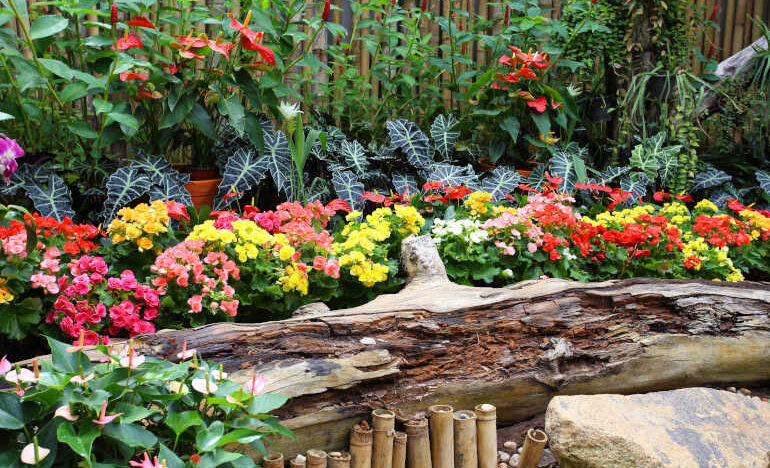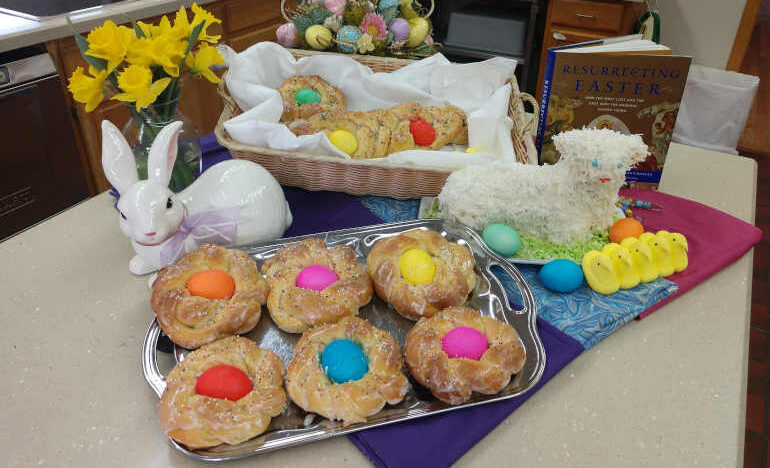Spiritual Treasures Along the Contemplative Path

An Introduction to Interspirituality
By Kathy Keary
Imagine the most magnificent and lush flower garden your eyes have ever witnessed. Blooms of every color grace the landscape. Each blossom is breath-taking, but the melding of stunning colors creates the ambience of being in paradise.
The same is true with the many faith traditions that have sprung up since the beginning of time. Each one brings its followers to experience the divine in a unique and meaningful way. Collectively, they form a brilliant tapestry that speaks of the many ways that people through the ages have sought and found God. This mosaic of spiritualities has paved the way allowing the opportunity for seekers to experience a glimpse of the heavenly realm.
New articles in this series are posted to the website every Monday. The full series can be found here: An Invitation to Something New: The Contemplative Life. On Thursday’s we’ll send an email to remind you of the articles.
Interfaith dialogue has been encouraged in the Catholic Church for decades. Nostra Aetate (In Our Time), the Second Vatican Council’s Declaration on the Relation of the Church to Non-Christian Religions stands as a landmark in interfaith relations. This document brought new direction and understanding to the Church’s position on the promotion of dialogue and reconciliation with other faith traditions. (Scarboro Missions)
Many Church documents have been published since the Second Vatican Council promoting the value of exposing ourselves to diverse faiths. For example, in the apostolic exhortation, Evangelii Nuntiand, (Evangelization in the Modern World), Pope Paul VI asserts: “The Church respects and esteems these non-Christian religions because they are the living expression of the soul of vast groups of people. They carry within them the echo of thousands of years of searching for God.” (Scarboro Missions)
Growing in an understanding of diverse faiths fortifies a sense of unity among people. This pursuit promotes peace and respect among the various cultures of the world contributing to the building up of society at large.
Throughout his papacy, Pope Francis has championed interfaith discourse as a means to achieve peace and conflict resolution among cultures. The common thread that connects each of the pope’s many foreign trips has been interfaith dialogue, particularly his outreach to Muslims. (DW)
The impetus behind interfaith exploration is not for the sake of conversion. As a matter of fact, learning the treasures offered in other cultures has the propensity to strengthen one’s appreciation for their own faith. As a Catholic, I have discovered attendance at Mass to be a far more mystical experience as the result of delving into the spiritual riches offered in other faiths. Learning about the contemplative gems found in other traditions enhances a felt-sense of the divine presence as I engage in my own spiritual practices.
Each faith tradition offers unique wisdom to a discussion about the spiritual life. In the words of The Chaplaincy Institute:
We honor the term “Interfaith” as a vision and theology that embraces the universal truths in the world’s spiritual traditions and honors the beautiful diversity in human experience, along with our essential unity.…By honoring the diversity in creation and human experience, along with our essential unity, Interfaith practitioners affirm the Divine that is too big to be contained solely within any one religion, word, or context.
Brother Wayne Teasdale, a Catholic monk, introduced the term, “InterSpiritual,” in his 1999 book, The Mystic Heart: Discovering a Universal Spirituality in the World’s Religions. This concept transcends dogma embracing shared spiritual truths on a deeper level. Many are nourished by the wisdom offered by many faiths or mystical traditions without one religion they call home. (Chaplaincy)
Never miss an article published on the Renewal Center website: Sign up to receive our newsletters
Kurt Johnson, an associate of Teasdale, points out that the concept of interspirituality was not born with Teasdale’s insightful book. More than 50 historical spiritual figures have spoken of this paradigm including the Spanish Catholic priest, Raimon Panikkar, and the American Trappist monk, Thomas Merton.
In her writings, Mirabai Starr, an interspiritual author and professor, highlights the sacred gems of various faith traditions as she leads her audience into a realm where the divine presence is palpable. I find her books and presentations to be extremely moving as she leads us on a path were diverse traditions complement and enhance one another.
The Buddhist scholar, Edward Bastian, eloquently comments on the value of embarking on an interspiritual journey:
Just as travelers to foreign lands return to see more clearly their own homelands, our InterSpiritual journeys into other traditions helps us to discern the refined nuances and gems of our own tradition as if for the first time. By travelling awhile in other contemplative traditions, our own meditations become the vehicle for universal wisdom and kinship with people of all traditions. This is equally true for people without a tradition. For these practices awake the divine potential dormant within their hearts and minds.
We recently concluded a 14-part series comparing the spirituality of Jesus and the Buddha which can be found on our website at “Jesus and the Buddha.” Next week we will begin an exploration into the riches found in Islam with an emphasis on the many ways that this tradition supports the contemplative walk. It is our hope that your spiritual practices will be deepened by joining us on this journey.
References
Bastian, Edward W. “Interspirituality.” Spiritual Paths Institute, 2010. https://spiritualpaths.net/interspiritual-mandala-2/interspirituality
“Interfaith and Interpersonal as Core Perspectives.” The Chaplaincy Institute: An Interfaith Seminary and Community. https://chaplaincyinstitute.org/why-interfaith/
Johnson, Kurt. “The Growing Edge of Interspirituality.” The Interfaith Observer, October 14, 2017. www.theinterfaithobserver.org/…/2017/10/2/the-growing-edge-of-interspirituality
“Official Church Documents on Interfaith Dialogue.” Scarboro Missions. https://www.scarboromissions.ca/interfaith-dialogue/the-church-dialogue/official-church-documents-on-interfaith-dialogue
“Pope Francis pushes Catholic Church towards interfaith dialogue on travels.” DW. https://dw.com/en/pope-francis-pushes-catholic-church-towards-interfaith-dialogue-on-travels/a-41571122
Photo Credit: Photo 33903367 © Anusorn62 | Dreamstime.com
[Kathy Keary, a Precious Blood Companion and spiritual director, holds a master’s degree in theological studies and is a graduate of the Atchison Benedictine’s Sophia Center’s Souljourners Program, an intense study of spirituality and spiritual direction. Kathy believes that the divine is present and active in all of life and encourages others to be awakened to the God in all including the divine within. She enjoys accompanying others on their journey to wholeness discovering the person they were created to be.]
We’d Like to Hear From You!
We’d like to know what you think about this article. Send us a comment using the form below. Do you have a suggestion? Is there something you want to learn more about? Send us a note.
Related

Easter Bread (Pane di Pasqua)
By Lucia Ferrara
Easter bread is a fun bread. It’s a fun bread to make with your children, with your family, with neighbors and friends. The tradition of Easter bread dates back centuries and comes from many parts of the world.

Easter Sunday, the Resurrection of the Lord
Today’s scriptures tell us how three days changed the world. How have they changed you?
Categories
Assembling God's Puzzle Coffee with Padre Cooking & Spirituality Encounters of the 4th Kind Family Matters Reflections on the Eucharsitic Prayers Spiritual Resources Taize Prayers The Contemplative Life Traveling with Pilgrims of Hope Uncategorized Videos Week of Prayer for Uhristian Unity When you need a little help
